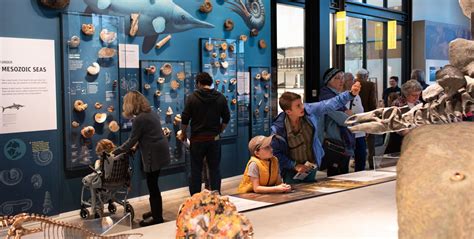The world of museums is a treasure trove of human history, art, and science, with each exhibit offering a unique window into the past, present, and future. From the ancient civilizations of Egypt and Greece to the modern masterpieces of Picasso and Warhol, museum exhibits have the power to educate, inspire, and challenge our perceptions. In this comprehensive guide, we will delve into the fascinating world of museum exhibits, exploring the most notable displays, the stories behind them, and the impact they have on our understanding of the world.
Introduction to Museum Exhibits
Museum exhibits are carefully curated collections of artifacts, artworks, and interactive displays that are designed to engage, inform, and entertain visitors. These exhibits can range from small, specialized displays to large, blockbuster shows that attract millions of visitors. Whether you are an art lover, a history buff, or a science enthusiast, there is a museum exhibit out there that is sure to captivate and inspire you.
The Most Famous Museum Exhibits
Some museum exhibits have become so iconic that they are synonymous with the museums themselves. The Rosetta Stone at the British Museum, the Mona Lisa at the Louvre, and the Star-Spangled Banner at the Smithsonian National Museum of American History are just a few examples of the most famous museum exhibits in the world. These exhibits have been seen by millions of people and have become an integral part of our cultural heritage.
The Rosetta Stone
The Rosetta Stone is one of the most famous museum exhibits in the world, and it is a must-see for anyone interested in ancient history. Discovered in 1799, the stone is a decree issued by Egyptian pharaoh Ptolemy V in 196 BC, and it features the same text in three languages: ancient Greek, demotic script, and hieroglyphics. The stone was instrumental in deciphering the hieroglyphics of ancient Egypt and has become a symbol of the power of language and culture.
The Mona Lisa
The Mona Lisa is perhaps the most famous painting in the world, and it is a highlight of the Louvre Museum in Paris. Painted by Leonardo da Vinci in the early 16th century, the portrait is known for its enigmatic smile and its incredible level of detail. The Mona Lisa has been the subject of numerous studies, parodies, and references in popular culture, and it continues to fascinate art lovers to this day.
The Star-Spangled Banner
The Star-Spangled Banner is the flag that inspired the national anthem of the United States, and it is a treasured exhibit at the Smithsonian National Museum of American History. The flag was flown over Fort McHenry during the War of 1812, and it was the sight of the flag still waving after a bombardment by the British that inspired Francis Scott Key to write the poem that would become the national anthem.
The Science of Museum Exhibits
Museum exhibits are not just about displaying artifacts; they are also about telling stories and conveying information. The science of museum exhibits involves a range of disciplines, from curatorship and conservation to education and psychology. By understanding how people learn and interact with exhibits, museums can create engaging and effective displays that inspire and educate visitors.
The Psychology of Museum Visits
Research has shown that people visit museums for a range of reasons, from entertainment and socialization to education and personal growth. By understanding the motivations and behaviors of museum visitors, exhibit designers can create displays that meet the needs and interests of their audience. This might involve using interactive elements, such as touchscreens and hands-on activities, or creating immersive environments that simulate real-world experiences.
The Technology of Museum Exhibits
Technology is playing an increasingly important role in the creation and presentation of museum exhibits. From digital displays and virtual reality experiences to social media and online collections, museums are using technology to engage visitors and provide new ways of accessing and interacting with their collections. By leveraging the latest technologies, museums can create innovative and interactive exhibits that inspire and educate visitors.
The Future of Museum Exhibits
The future of museum exhibits is exciting and uncertain, with new technologies and trends emerging all the time. From the use of artificial intelligence and machine learning to the creation of virtual and augmented reality experiences, the possibilities are endless. By embracing these new technologies and trends, museums can create exhibits that are more engaging, more interactive, and more relevant to the needs and interests of their visitors.
Virtual and Augmented Reality
Virtual and augmented reality are two of the most exciting technologies to emerge in recent years, and they have the potential to revolutionize the way we experience museum exhibits. By using VR and AR, museums can create immersive and interactive environments that simulate real-world experiences and provide new ways of accessing and interacting with their collections.
Artificial Intelligence and Machine Learning
Artificial intelligence and machine learning are also being used in museums to create more personalized and interactive exhibits. By using AI and ML, museums can analyze visitor behavior and preferences, and create exhibits that are tailored to their needs and interests. This might involve using chatbots and virtual assistants to provide information and answer questions, or using data analytics to optimize exhibit design and layout.
Conclusion
Museum exhibits are a powerful way to educate, inspire, and challenge our perceptions of the world. From the ancient civilizations of Egypt and Greece to the modern masterpieces of Picasso and Warhol, museum exhibits have the power to captivate and inspire us. By understanding the stories behind these exhibits, the science of museum exhibits, and the trends and technologies that are shaping the future of museums, we can gain a deeper appreciation for the role that museums play in our lives and our society.
FAQ Section
What is the most famous museum exhibit in the world?
+The most famous museum exhibit in the world is the Mona Lisa, which is housed at the Louvre Museum in Paris. The painting is known for its enigmatic smile and its incredible level of detail, and it is seen by millions of visitors each year.
What is the science behind museum exhibits?
+The science behind museum exhibits involves a range of disciplines, from curatorship and conservation to education and psychology. By understanding how people learn and interact with exhibits, museums can create engaging and effective displays that inspire and educate visitors.
What is the future of museum exhibits?
+The future of museum exhibits is exciting and uncertain, with new technologies and trends emerging all the time. From the use of artificial intelligence and machine learning to the creation of virtual and augmented reality experiences, the possibilities are endless. By embracing these new technologies and trends, museums can create exhibits that are more engaging, more interactive, and more relevant to the needs and interests of their visitors.
In conclusion, museum exhibits are a powerful way to educate, inspire, and challenge our perceptions of the world. By understanding the stories behind these exhibits, the science of museum exhibits, and the trends and technologies that are shaping the future of museums, we can gain a deeper appreciation for the role that museums play in our lives and our society. Whether you are an art lover, a history buff, or a science enthusiast, there is a museum exhibit out there that is sure to captivate and inspire you. So why not visit your local museum today and discover the wonders that await you?



